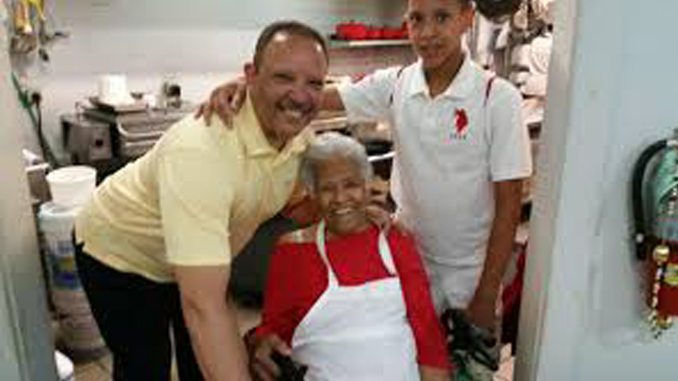
Marc H. Morial
President and CEO National Urban League
“I was taught that your job was to make this earth better. I hope my children will carry on. I hope I’ve taught them enough to keep trying to grow, keep trying to make people understand how to enjoy life. Look at all the beautiful things around you, look at the progress. You gotta enjoy that, you gotta appreciate that, and I do.” – Leah Chase
With the passing this week of New Orleans’ Queen of Creole cuisine, Leah Chase, a part of New Orleans has died. It was at her table where the Freedom Riders gathered to break bread after their dangerous journey into the segregated south. It was there where the NAACP planned strategy. She hosted musicians, artists, actors and Presidents. In typical fashion, she scolded President Obama for adding hot sauce to her already-perfectly-seasoned gumbo.
My earliest memories of Mrs. Chase were Friday night outings with my grandparents to her landmark restaurant, Dooky Chase. In the days of Jim Crow, most of the upscale restaurants refused to serve Black patrons, so Dooky Chase quickly became a cultural, social and political center for Black life in New Orleans. When the National Urban League held our conference in New Orleans in 2012, I was proud to hold our Board of Trustees meeting there.
No visit home to New Orleans has ever been complete without a meal at Dooky Chase and a visit to the kitchen to catch up with its tireless proprietress. The woman whose portrait is enshrined in the National Portrait Gallery, and whose life inspired a beloved Disney character was born in Madisonville, Louisiana, across Lake Ponchartrain from New Orleans. One of 11 children, she was 6 years old when the Great Depression struck, and she recalled wearing clothes made from grain sacks and subsisting on food from their own garden.
She arrived in New Orleans to attend Catholic high school, and went on to work at a French Quarter restaurant for $1 a day. Just after World War II ended, she married jazz musician Edgar “Dooky” Chase, whose parents owned a po’ boy stand in Treme. Over the years she would transform the business into one of the most significant and celebrated restaurants in the entire country.
A generation of children were introduced to Leah Chase in the character of Tiana, Disney’s first African-American princess, in 2009’s The Princess and the Frog. When he first visited Dooky Chase, the film’s co-director John Musker, he was surprised to see a photo of General George Patton on the wall among Mrs. Chase’s famed collection of African-American art.
“She goes, ‘That was a man that I admired,’” Musker recalled. “It was just a great thing to see this warm and nurturing thing, but she has this flinty side, too, where she can be both. That’s what we tried to get with Tiana, that she’s very warm and vulnerable but she has a passion, spine and a backbone and she’s really trying to get something done and doesn’t give in easily to things.”
Mrs. Chase always said, “In my dining room, we changed the course of America over a bowl of gumbo and some fried chicken.” It was an honor beyond words to count her among my friends, and to carry forth her legacy.
Recommended For You.



Be the first to comment